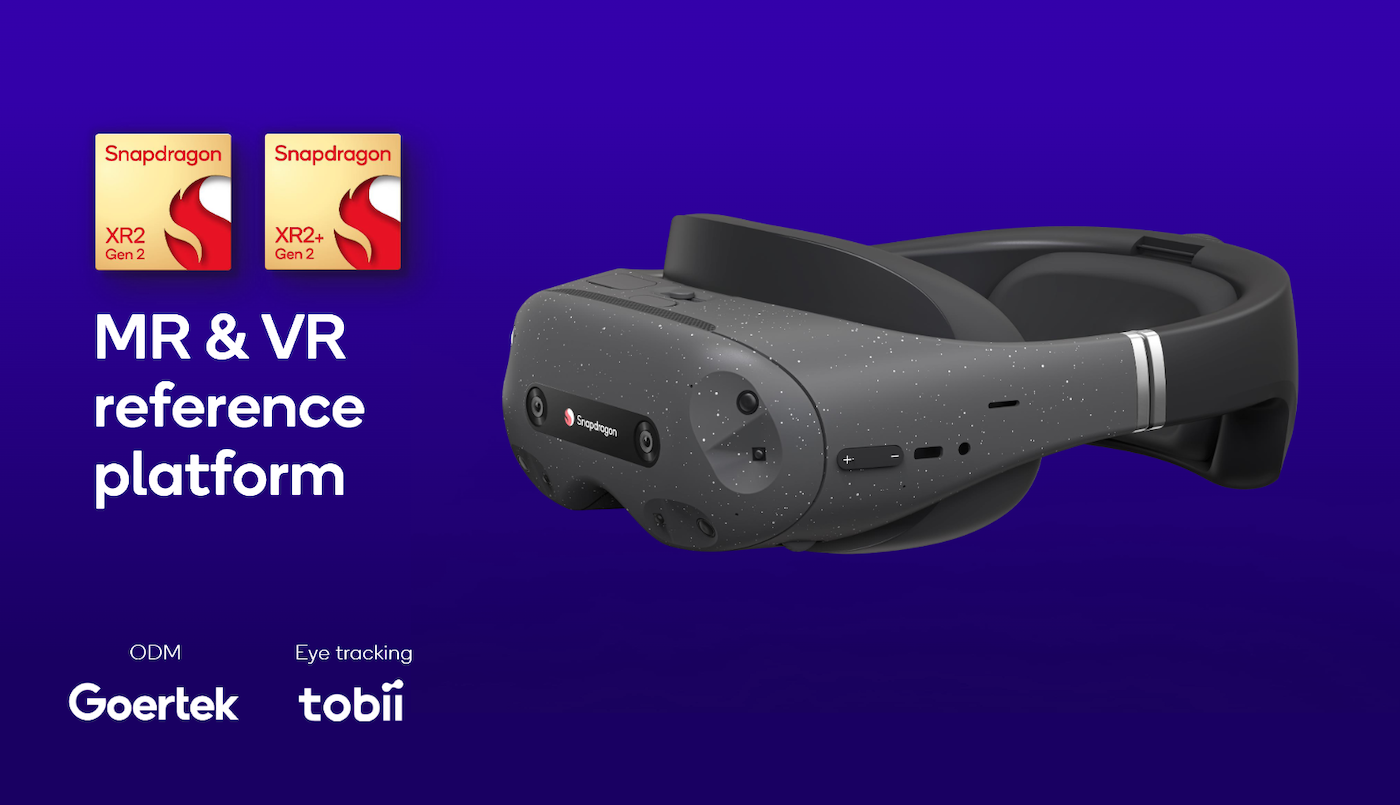At CES 2024 in Las Vegas, Qualcomm revealed its on-device AI for the Snapdragon XR2+ Gen 2 chip for virtual and mixed reality headsets. Then, during a keynote address on January 10, Qualcomm Chairman and CEO Cristiano Amon discussed business use cases for virtual reality, including providing digital environments for training. He suggested three questions that virtual reality and MRI could answer for companies: “How do you train people? How do you fully immerse yourself in that digital environment? How are communications developed? Additionally, Amon talked about AI-enhanced phones.
Note: This article was updated to reflect Qualcomm's January 10 keynote. TechRepublic covers CES 2024 remotely.
Snapdragon XR2+ Gen 2 chips improve virtual and mixed reality meetings
The Snapdragon XR2+ Gen 2 is the continuation of the Snapdragon XR2 Gen 2 platform for AI, virtual reality and mixed reality. The Snapdragon XR2+ Gen 2 offers the following:
- 4.3K resolution per 4.3K per eye.
- 90 frames per second.
- Supports 12 or more simultaneous cameras for motion tracking
- Connectivity Wi-Fi 7, Wi-Fi 6E, Bluetooth 5.3 and Bluetooth 5.2.
The Snapdragon XR2+ Gen 2 has a 15% higher GPU frequency and 20% higher CPU frequency compared to the Snapdragon “life-sized overlays and more fluid virtual desktops.” said Hugo Swart, vice president and general manager of XR, Qualcomm Technologies, Inc., in a press release.
SEE: In more news from CES 2024, HP introduced its Specter x360 16 2-in-1 and Specter x360 14 2-in-1 laptops capable of running local AI workloads. (Technological Republic)
“Our job was to create a computing engine that could make that (AI) technology run widely,” Amon said during Qualcomm's keynote at CES. “We are at a point where those (AI) capabilities in processors and semiconductors are available. The next step is to develop those use cases and applications.”
For businesses and employees, that means more efficient virtual desktops, virtual meetings, and virtual demos. Note that this doesn't necessarily mean that generative AI will run on a headset; Instead, single-chip AI performance helps keep track of all the data needed to fuse digital and physical images.
“Spatial computing will be another computing platform that will eventually reach large scale,” Amon said during the keynote.
Qualcomm competes with Apple, Intel and NVIDIA
Samsung and Google will use the Snapdragon XR2+ Gen 2 in their planned VR offerings (Figure A) running on Android, which could eventually compete with the Apple Vision Pro. The Snapdragon XR2+ Gen 2 currently competes with Intel's AI PC technology for lightweight and automotive devices, as well as NVIDIA's semiconductors.
Figure A
Qualcomm eyes AI-enhanced phones
During his keynote, Amon talked about Qualcomm's history in the mobile space. The development of chips on which to run AI represents an evolution of mobile device technology, he said, but he does not predict that AI-powered devices will replace today's phones.
Instead, Amon said: “What is going to happen now is that the phone will have a different function, which is not only what it used to do, where the phone was good for all the applications that you have, but also the phone will function”. communicate with the cloud. The phone is not going anywhere, but it will be improved by AI.”
For example, Amon said, a person could ask a generative AI assistant to call an Uber. Instead of using the Uber app on the phone, the generative AI assistant can connect directly to Uber through the cloud.
Qualcomm's automotive technology news at CES 2024
Qualcomm continued the classic CES trend of showcasing the latest automotive technology with its Snapdragon Digital Chassis platform, which enables connected car services for on-the-go work and life efficiency. Other Qualcomm connected car offerings to be shown at CES 2024 include:
- Snapdragon Ride Platform, which helps global automakers and Tier 1 suppliers create automated driving solutions with Tier 3 driver assistance features such as lane keeping and automatic speed maintenance.
- Snapdragon Ride Flex SoC, centralized computing for digital cockpit, driver assistance and select autonomous driving functions on a single system-on-chip.
- Snapdragon Car-to-Cloud Services provide a way for organizations to push updates to connected car services.
- A highly efficient cloud-native environment for automotive application development and deployment provided in collaboration with AWS.
- Snapdragon Digital Chassis SoC for two-wheelers for small vehicles and agricultural or livestock vehicles.
One of the upgrades is Qualcomm's “next-generation AI-enabled digital cockpits” for generative AI at the edge (in this case, on the fly). That means cars, depending on the individual brand and app offerings, can run generative AI apps for dynamic updates of relevant information to drivers on the road. Services and recommendations can be personalized and applications can anticipate the driver's preferences and needs.
“Our commitment to advancing automotive technology in support of global automakers, tier-one suppliers and our ecosystem partners is helping shape the future of software-defined vehicles and is accelerating us into a new era.” for the automotive industry,” said Nakul Duggal, senior vice president and general manager of automotive and cloud computing at Qualcomm Technologies, Inc., in a press release.












